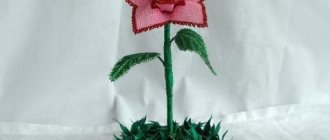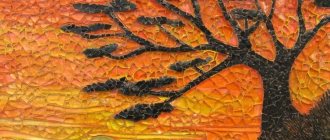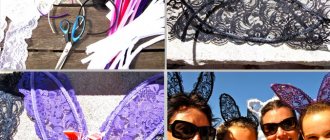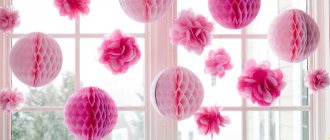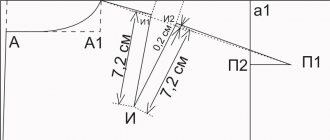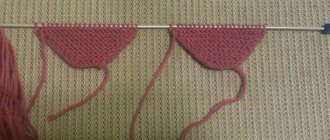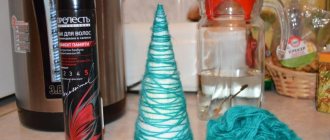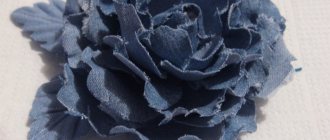Preparation of material
The original technique for making all kinds of bread products (for example, chess pieces, rosaries, ashtrays, checkers or dice) was invented by people serving sentences in prison several decades ago.
The best material for such crafts is low-quality wheat bread, baked from second or even third grade flour. Rye bread is used as a last resort. Light and airy bread of the highest quality, containing all kinds of food additives and leavening agents, is absolutely not suitable for this purpose.
Fast way
Plastic bread mass can be prepared in two ways: fast or slow. Material prepared using the first method does not guarantee high-quality and durable products. A rosary fashioned from a mass prepared in the second way, on the contrary, will be distinguished by its extraordinary strength.
Option #1
At the first stage, the bread crumb is separated from the crust and mixed with granulated sugar (sugar will prevent the molded beads from cracking during drying). There are no exact proportions. In each specific case, the ratio of ingredients used is determined experimentally. Only one thing is known: the better the quality of the bread, the more sugar you will have to add to it.
After this, they begin to thoroughly knead the bread and sugar mass. The duration of this process is from one to two hours (the signal for completion should be the complete dissolution of sugar crystals). The consistency of the finished mass for sculpting rosaries should be homogeneous and elastic, reminiscent of plasticine.
If desired, the mass can be painted in different colors. To obtain a radical black color, activated carbon tablets are used, crushed to a powdery state. Brighter colors are obtained by mixing the mass with ink from ballpoint or gel pens.
Recent Entries
How to clean a frying pan from carbon deposits in 10 minutes Don’t throw away yogurt cups: 3 cool craft ideas for kids Decorating for pennies: 6 ideas for crafts made from plastic spoons
Option No. 2
The material for modeling can be prepared without granulated sugar. In this case, the process of kneading the bread crumb will take at least six hours.
The moisturizer will be sweat secreted by the eccrine glands located on the palms and fingertips. The bread mass can be additionally moistened with a small amount of saliva, but it is recommended to refrain from using water.
Slow way
The bread crumb, separated from the crusts, is placed in a saucepan, granulated sugar is added and a small amount of boiling water is poured over it. The container with the bread mass is placed in a warm place and allowed to ferment for 48 hours. The criterion for the final readiness of the product will be the appearance of a characteristic sour odor.
The semi-finished product is removed from the pan, lightly squeezed and placed in a mesh colander lined with a double layer of gauze (a calico or calico rag will also work), and thoroughly ground with a spoon.
The dry substance remaining in the colander is discarded, and the ground liquid mass is laid out on plastic wrap for partial drying. The drying mass must be kneaded and turned over from time to time.
The material is considered ready for modeling when its consistency closely resembles plasticine.
What are rosary beads made of?
What are rosary beads made of?
Flip beads and car beads are made from many different materials, mostly improvised means adapted for the production of such products. The finished rosary is decorated with paintings or carved designs and ornaments. Let's get acquainted with the most common materials from which rosaries are made.
Bread
Bread crumb is a rare material for handmade crafts. It's easy to use and can be used to make rosary links in the most incredible shapes. Crossover rosaries made of bread look quite attractive and at first glance it is impossible to guess the true material. The fact is that when finished, the links look like wood, and the various designs make the rosary even more beautiful and sophisticated.
Plexiglas
The second most popular and accessible material for rosaries, because in most cases household waste is used for melting down to produce rosaries. A coloring pigment is added to the molten mass from the bodies of pens and lighters or left transparent. Various ornaments and designs are placed in transparent links. This makes the plexiglass rosary especially exclusive and original.
Polyester resin
This material is most often used to make rosary beads for cars with religious themes - with crosses, books, icons. Polyester resin is wear-resistant, durable, and chemical resistant. In addition, it is an environmentally friendly material and easy to use. Beautiful rosary beads made of polyester resin look very impressive.
bull horn
Bone rosaries are incredibly beautiful and durable, including being pleasant to the touch. The sound of products made from bull horn is more attractive - ringing, loud, it is especially revered in "thieves" circles, and at the same time it has a pacifying effect. Crossover rosary beads made of bull horn of various shapes are distinguished by their durability, hardness and resistance to external influences.
Precious stones and metals
You can add a little chic to any product by adding gold, platinum, silver or decorating it with precious stones. A rosary can be not just beautiful, but also an expensive product that can be boasted in high circles. Exclusive decoration of rosaries with precious metals is for lovers of chic, enchanting beauty that can decorate a car or please the eye in moments of emotional stress.
Completing of the work
Before you start sculpting, you need to decide on the purpose of the intended product. If the rosary will be used for performing religious rituals, reading prayers and performing meditations, then there must be a certain number of beads on the thread:
- for Buddhists - 18, 21, 27, 54,108;
- for Hindus - 50, 54, 108;
- for Muslims - 11, 33, 99 (plus additional pendant);
- for Catholics - 50 (divided into groups of 10);
- for Orthodox - 33, 103 (in some cases the number of beads can be a multiple of 10 or 12);
- for Old Believers - 109.
A rosary intended to be worn as a decorative accessory can have any number of elements.
How to make Orthodox rosary with your own hands
Making rosary beads for yourself is quite simple. First, you need to determine what material they will be made of, because such an individual object of religion accumulates the power of faith and has a strong energy field that can calm a person and bring him into peace of mind.
The simplest option for making rosary beads is a regular cord with knots tied on it.
The number of nodes will mean:
- You can make your own rosary. Thirty and three dividing beads - the age of Christ.
- Fifty knots symbolize Pentecost.
- The seventy knots are reminiscent of the seventy apostles.
- A rosary of one hundred knots is a classic option for monks.
Also, an easy way is to make rosary beads from ready-made beads of different sizes and woolen thread purchased at a craft store. After each ball is strung, a knot is tied on the thread. The completed chain is decorated with a brush.
Beads for rosaries are made of glass, stone or amber. But most often they use natural wood. The warm texture of wood can give vital energy, protect against evil spirits and negativity, teach patience and meekness and provide enlightenment of the mind.
To make the product you will need:
- Beading thread or thin fishing line.
- A block of selected wood.
- Drill with a thin drill bit for wood.
- Sandpaper, finely cut file.
- Varnish or stain for coating the finished product.
- Cross.
- Jigsaw.
It is recommended to use gloves to protect your hands.
First, you should think about how many beads will be in the rosary. Procedure:
- Beads are strung on a thread. Markings are made on a wooden block in accordance with the intended number of beads.
- The workpiece is sawn into pieces.
- A hole is drilled in the center of each element.
- The shape is shaped with a file, and the splinters are polished with sanding paper. You should remember about the dividing balls, they should differ in size.
- The blanks are varnished.
- The dried beads are put on a thread or fishing line, alternating with separating balls every ten beads. At the end a cross is added.
- The finished thread is secured with a knot.
To make it easier to sort through the beads, it is advisable to leave a small gap between the beads.
Whatever the rosary is made of, it is important to remember that they are a personal amulet and provide peace of mind when combined with prayer coming from the heart.
The meaning of rosary beads in the life of a Buddhist
Mala or prenva (translated from Tibetan) carries a sacred meaning:
- Reminder to say prayers. Mantras (prayer) and prenva are one. Each bead helps you remember the right word, mantra and align yourself with the Buddha.
- Check. There can be quite a lot of rituals and mantras specific to each Buddhist, so beads are needed for control.
- Symbolism. Rosary, mala, prenva...this spiritual instrument has many names. For true believers in the teachings of Buddha, this is a symbol of the universe. The circle formed by the rosary is a world in which each person (bead) takes its place and forms harmony. In addition, rosary beads made from certain materials allow you to achieve different life goals and return meaning to life.
- Distinctive sign. In Orthodoxy, Islam and other religions there are many symbols and signs that distinguish true believers. In Buddhism, apart from the image of the Buddha himself, there is practically nothing that could hint at belonging to this religion. Moreover, believers are prohibited from wearing an image of Buddha himself. Therefore, a Buddhist bracelet, gracefully wrapped around the wrist, immediately distinguishes the followers of the religion.
- Rhythm. Mantras have a special rhythm that you need to constantly keep in your head, which is extremely inconvenient, because you also need to stay on top of the text of the unusual prayer. Here again the rosary comes to the rescue.
- Concentration. Attention and concentration are always needed when reading mantras, especially if the prayer has been going on for many hours to perform a certain ritual.
- Medicinal properties. Amazing cases of good luck and healing from bodily ailments are often told if a person immerses himself in prayer with all his soul and body and often touches his rosary. This has a good scientific basis, because on our palm there are a lot of special points and nerve endings that are affected by the rhythmic sorting of mala beads.
Where else can you wear malas? In addition, tattoos in the form of folded palms with rosary beads on the wrist are popular among Buddhists, because prenva is a faithful amulet not only for true believers, but also simply for admirers of the ideas of the Buddha himself.
Sometimes malas belonging to the legendary Teacher-Lamas are even walled up in the foundations of future temples made of clay, like a great shrine. How long did these rosaries lie in the hands of an enlightened person and how many mantras did they hear? It’s a great honor to even touch the edge of such a treasure!
Malas passed from teacher to student are a sign of spiritual unity and continuity of generations.
If you count 108,000 prayers on your rosary, then you can leave them in a Buddhist temple to multiply the grace from systematic practices.
